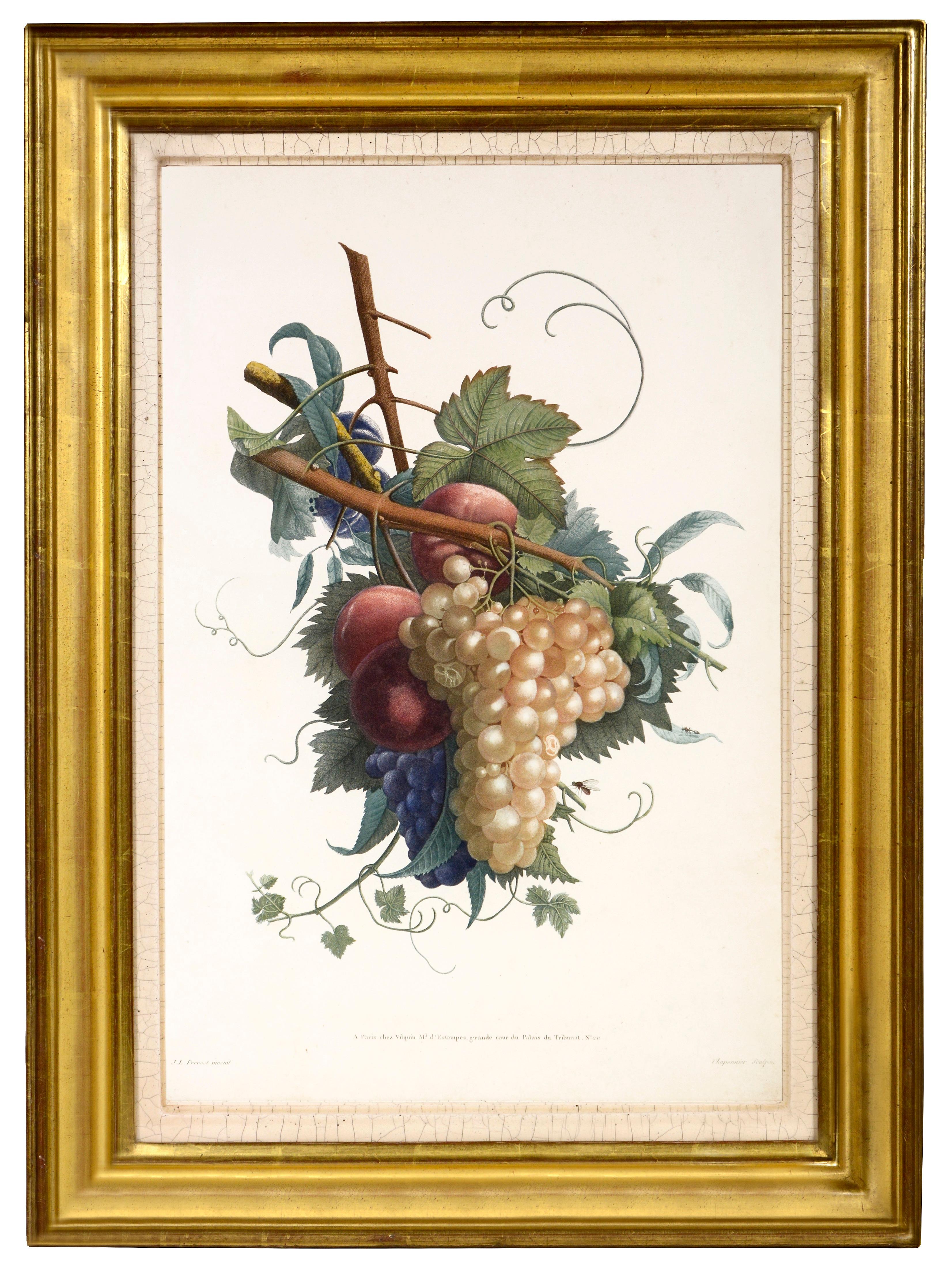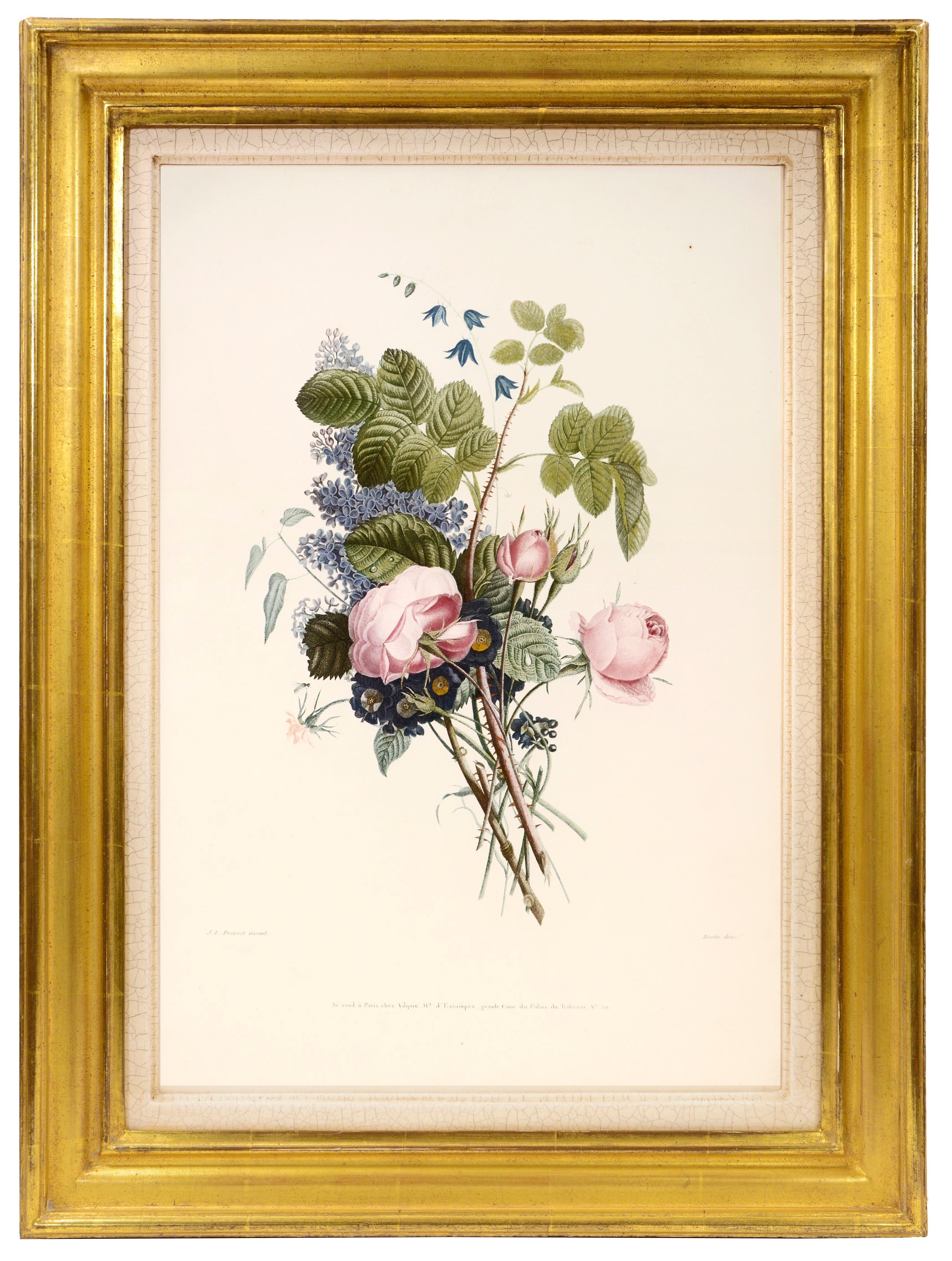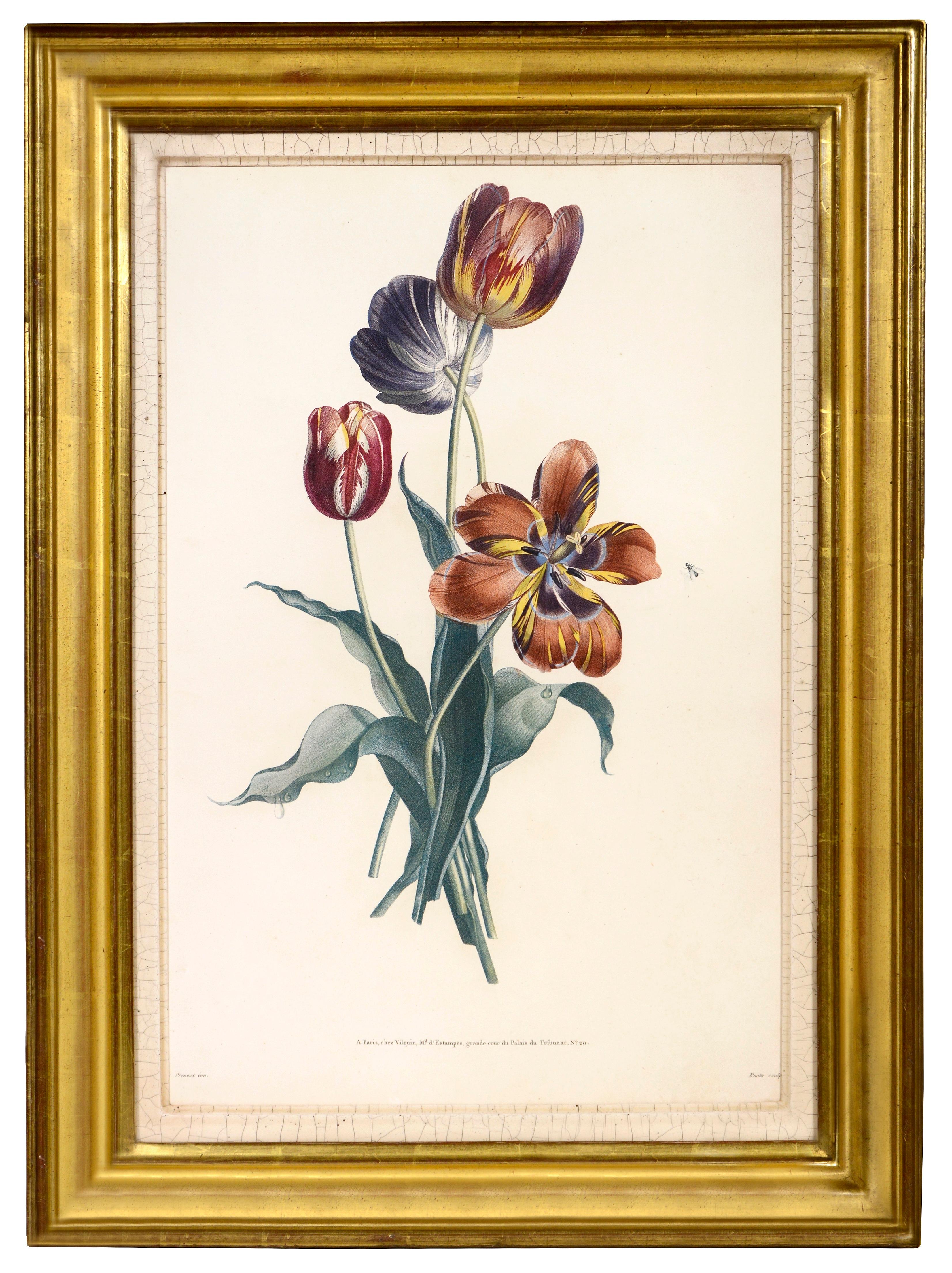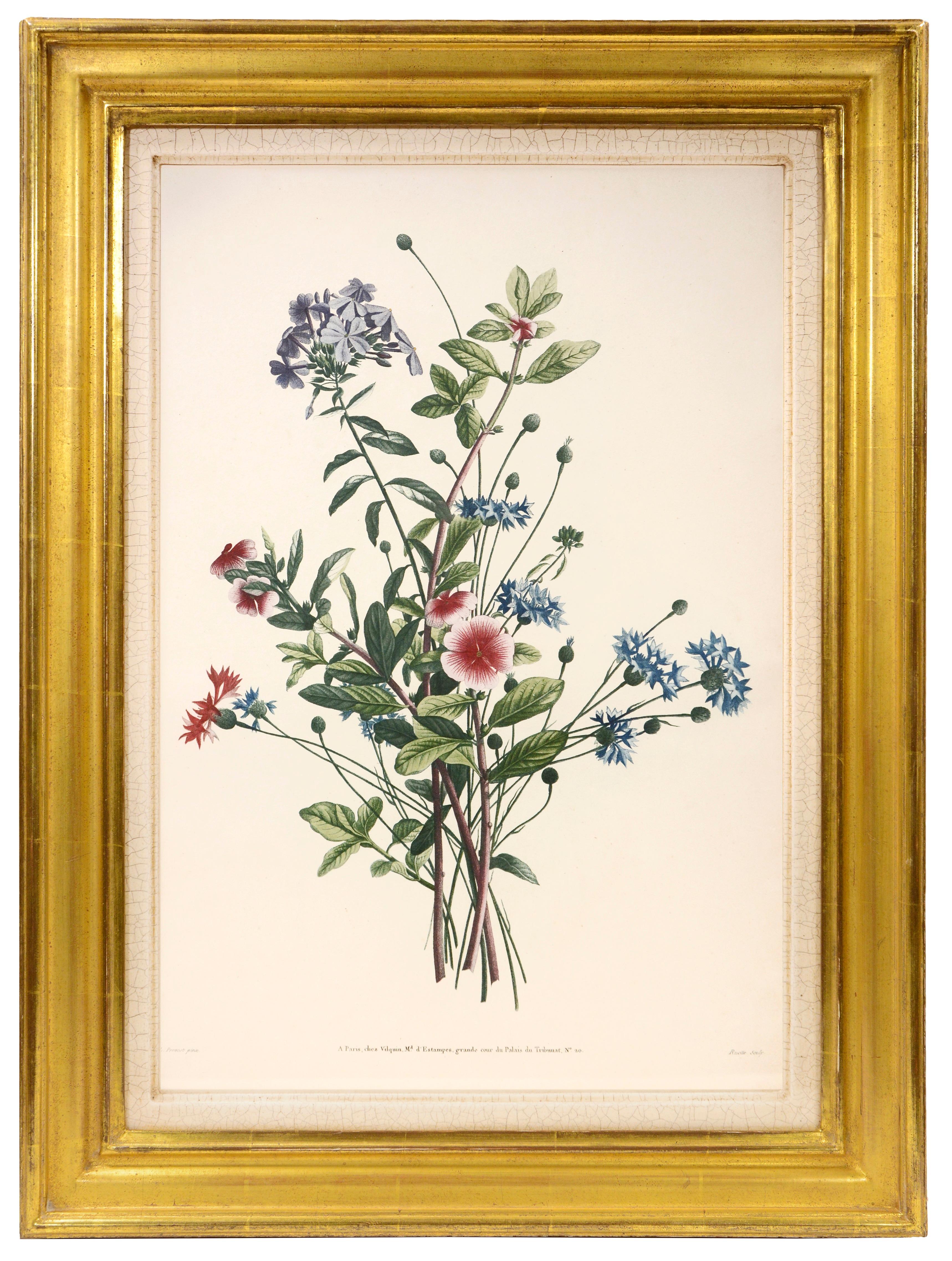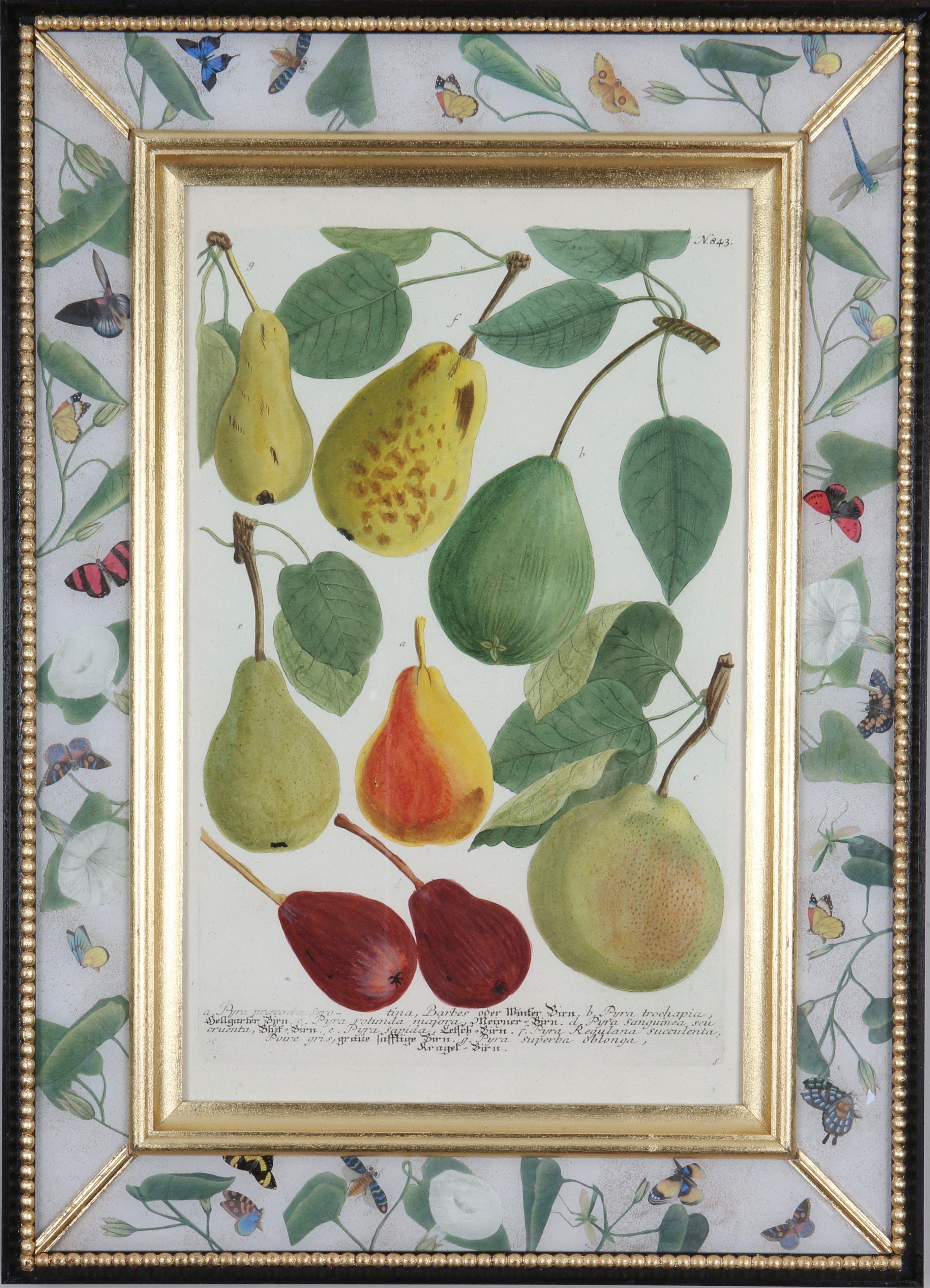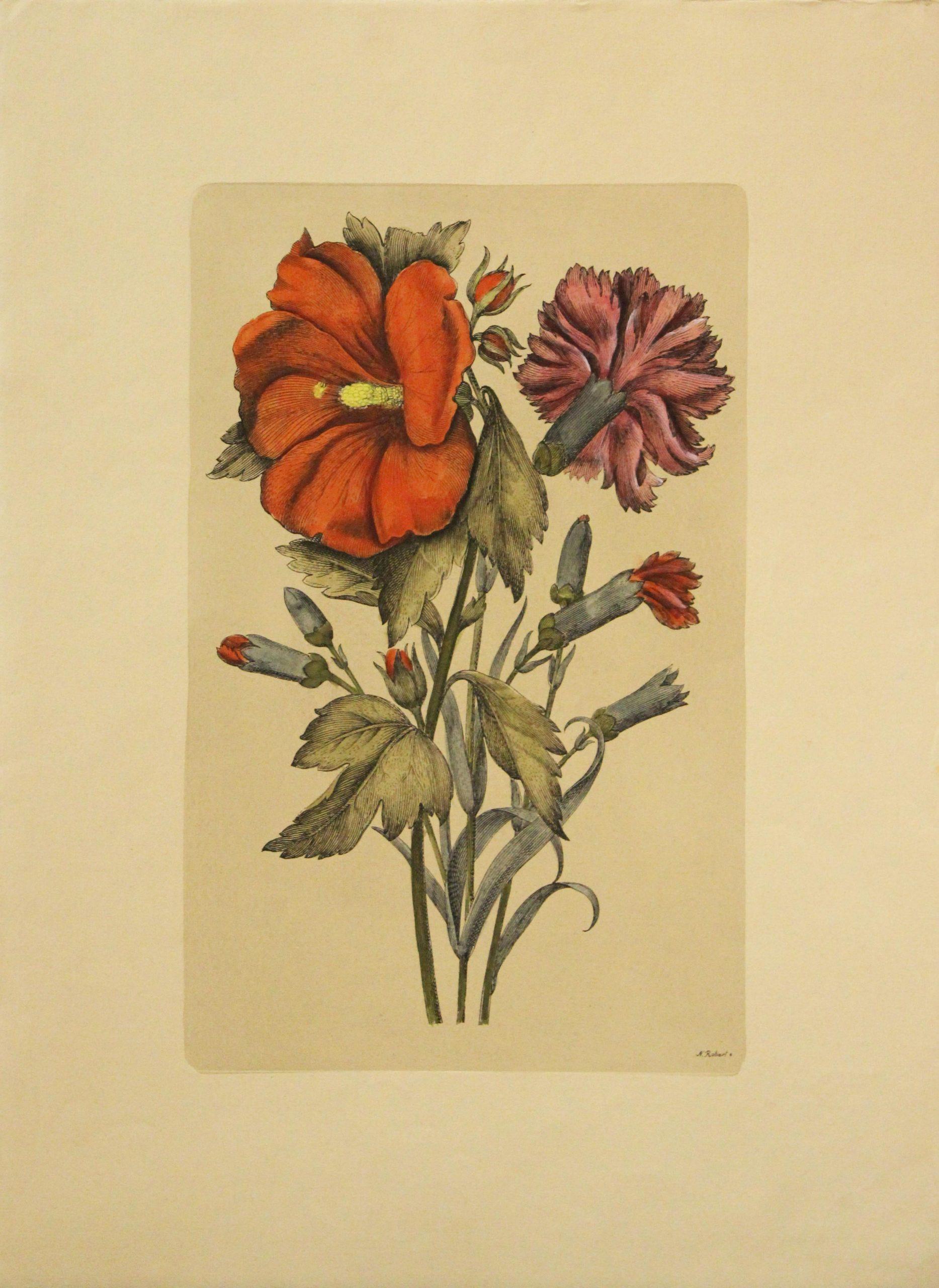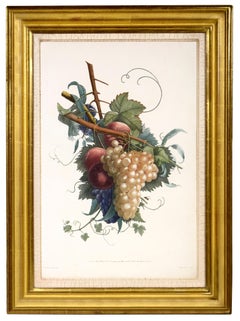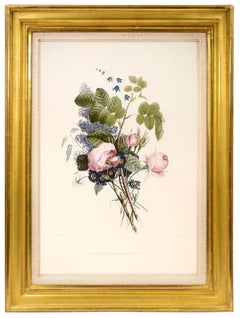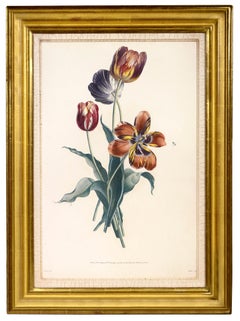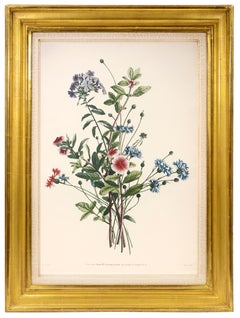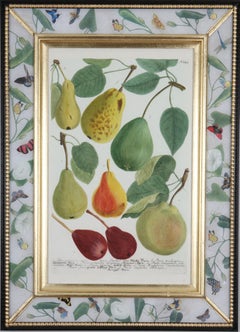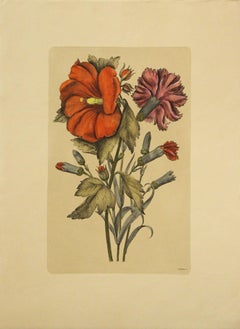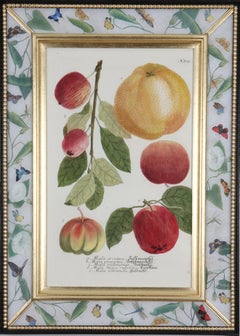Items Similar to PRÉVOST. Print from a Collection des Fleurs et des Fruits
Want more images or videos?
Request additional images or videos from the seller
1 of 9
Jean Louis PrévostPRÉVOST. Print from a Collection des Fleurs et des Fruits1805
1805
$4,095.20
£3,000
€3,497.78
CA$5,648.71
A$6,187.98
CHF 3,257.11
MX$73,855.22
NOK 41,519.96
SEK 37,955.50
DKK 26,127.76
About the Item
Original stipple engraving by Charles-Louis Ruotte, printed in colour and finished by hand.
[Paris, 1805]
Prévost came from a long line of French artists spanning 400 years. Jean-Louis himself first exhibited at the Salon when only fourteen years of age, showing paintings of bouquets, a vase of flowers and other small botanical studies. Immediately he was commissioned by Monsieur Roussel to paint the flowers in the wealthy landowner's garden. The result was a 12-volume work of gouache studies, entitled "Hortus Cellensis", and was at once acquired by the Paris Natural History Library.
Prévost's "Collection des Fleurs et Fruits", a series of 48 stipple engraved plates depicting bouquets and baskets of fruit was engraved by the brilliant and versatile artist Charles Louis Ruotte, who had learned the new practice of coloured engraving under Bartolozzi in London. The work is known as one of the most magnificent and beautiful publications in the world of botanical art, and was used as a manual for designers of chintzes and toiles. Above all, he was a master of composition who could unerringly blend the finest hot-house specimen with the simplest bloom of field or hedgerow to produce beautiful images.
- Creator:Jean Louis Prévost (1750 - 1820, French)
- Creation Year:1805
- Dimensions:Height: 25.04 in (63.6 cm)Width: 18.59 in (47.2 cm)
- Medium:
- Movement & Style:
- Period:
- Condition:Framed and Glazed in a handmade gilt frame. Overall dimensions 63.6 x 47.2 cm.
- Gallery Location:London, GB
- Reference Number:Seller: 935121stDibs: LU141926741852
About the Seller
5.0
Vetted Professional Seller
Every seller passes strict standards for authenticity and reliability
Established in 1979
1stDibs seller since 2020
19 sales on 1stDibs
Typical response time: 5 hours
- ShippingRetrieving quote...Shipping from: London, United Kingdom
- Return Policy
More From This Seller
View AllPRÉVOST. Print from Collection des Fleurs et des Fruits
By Jean Louis Prévost
Located in London, GB
Original stipple engraving by Charles-Louis Ruotte, printed in colour and finished by hand.
[Paris. 1805]
Prévost came from a long line of French artists spanning 400 years. Jean-Louis himself first exhibited at the Salon when only fourteen years of age, showing paintings of bouquets, a vase of flowers and other small botanical studies. Immediately he was commissioned by Monsieur Roussel to paint the flowers in the wealthy landowner's garden.
The result was a 12-volume work of gouache studies, entitled "Hortus Cellensis", and was at once acquired by the Paris Natural History Library.
Prévost's "Collection des Fleurs et Fruits...
Category
Early 1800s Naturalistic Still-life Prints
Materials
Color, Engraving, Handmade Paper
PRÉVOST. Print from Collection des Fleurs et des Fruits
By Jean Louis Prévost
Located in London, GB
Original stipple engraving by Charles-Louis Ruotte, printed in colour and finished by hand.
[Paris, 1805]
Prévost came from a long line of French artists spanning 400 years. Jean-...
Category
Early 1800s Naturalistic Still-life Prints
Materials
Color, Engraving, Handmade Paper
PRÉVOST. Print from Collection des Fleurs et des Fruits
By Jean Louis Prévost
Located in London, GB
Original stipple engraving by Charles-Louis Ruotte, printed in colour and finished by hand. Framed and glazed, overall size: 63.3 by 47.2 cm.
[Paris 1805].
Prevost came from a lo...
Category
Early 1800s Naturalistic Still-life Prints
Materials
Color, Engraving, Handmade Paper
PRÉVOST. Print from Collection des Fleurs et des Fruits
By Jean Louis Prévost
Located in London, GB
Original stipple engraving by Charles-Louis Ruotte, printed in colour and finished by hand.
[Paris, 1805]
Prevost's "Collection des Fleurs et Fruits...
Category
Early 1800s Naturalistic Still-life Prints
Materials
Color, Engraving, Handmade Paper
POITEAU/TURPIN. Traité des arbres fruitiers: A Set of Four Apples
By POITEAU, A. and P. TURPIN.
Located in London, GB
POITEAU, A. and P. TURPIN.
Traité des arbres fruitiers: A Set of Four Apples
H. Perronneau for T. Delachausée, Paris, 1807-1835.
A set of Four Apples, fine stipple-engrave...
Category
Early 1800s Naturalistic Still-life Prints
Materials
Engraving, Handmade Paper, Watercolor
REDOUTE, Pierre Joseph. Rosa Parvi-Flora.
By Pierre-Joseph Redouté
Located in London, GB
A Gift from King Charles X to the Duchesse de Berry
REDOUTE, Pierre Joseph.
Rosa parvi-flora.
Watercolour over traces of black chalk on vellum, within gold framing lines; signed in...
Category
1820s Naturalistic Still-life Paintings
Materials
Chalk, Ink, Watercolor, Pen
You May Also Like
Johann Weinmann: c.18th Engravings of Fruit in Decalcomania Frames
Located in Richmond, GB
Hand-coloured mezzotint engravings from: ""Phytanthoza Iconographia"", c1739, presented in hand-made parcel-gilt, ebonised and decalcomania frames.
Johann Weinmann (1683-1741), a G...
Category
18th Century Figurative Drawings and Watercolors
Materials
Watercolor, Mezzotint
(Title Unknown)-Botanical Print. Printed in Italy.
By Nicholas Robert 1
Located in Chesterfield, MI
Botanical Print. Plate-signed. Measures 22.50 x 16.375 in. Unframed. Printed in Italy. Good Condition.
Category
Late 20th Century Still-life Prints
Materials
Lithograph
Johann Weinmann: c.18th Engravings of Fruit in Decalcomania Frames
Located in Richmond, GB
Hand-coloured mezzotint engravings from: ""Phytanthoza Iconographia"", c1739, presented in hand-made parcel-gilt, ebonised and decalcomania frames.
Johann Weinmann (1683-1741), a G...
Category
18th Century Figurative Drawings and Watercolors
Materials
Watercolor, Mezzotint
Johann Weinmann: c.18th Engraving of Fruit in a Decalcomania Frame.
Located in Richmond, GB
Hand-coloured mezzotint engravings from: ""Phytanthoza Iconographia"", c1739, presented in hand-made parcel-gilt, ebonised and decalcomania frames.
Johann Weinmann (1683-1741), a G...
Category
18th Century Figurative Prints
Materials
Watercolor, Mezzotint
Johann Weinmann: c.18th Engraving of Fruit in a Decalcomania Frame.
Located in Richmond, GB
Price is for one framed print. Prints sold individually.
Hand-coloured mezzotint engravings from: ""Phytanthoza Iconographia"", c1739, presented in hand-made parcel-gilt, ebonised ...
Category
18th Century Figurative Prints
Materials
Watercolor, Mezzotint
(Title Unknown)-Botanical Print. Printed in Italy
By Nicholas Robert 1
Located in Chesterfield, MI
Botanical Print. Plate-signed. Measures 22.25 x 16.375 in. Unframed. Printed in Italy. Good/Fair Condition. Paper border shows signs of age and handling. Image has an imperfection/cr...
Category
Late 20th Century Still-life Prints
Materials
Lithograph
More Ways To Browse
Antique Engravings London
Red Fox Oil Paintings
Ruan Hoffmann
Santa Fe Bronze
Sculpture Cake
Sculpture Pop Art Candy
Smith Brothers
Spanish Woman Oil Paintings
Stick Bug
Tom Young
Used Blimps
Used Dog Sleds
Vampire Art
Vanguard Oil Paintings
Vintage Bed Sheets
Vintage Running Posters
William Morris Art
Wood Cube Sculpture
